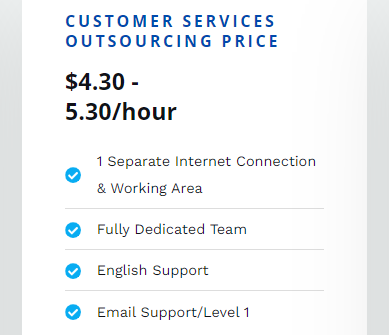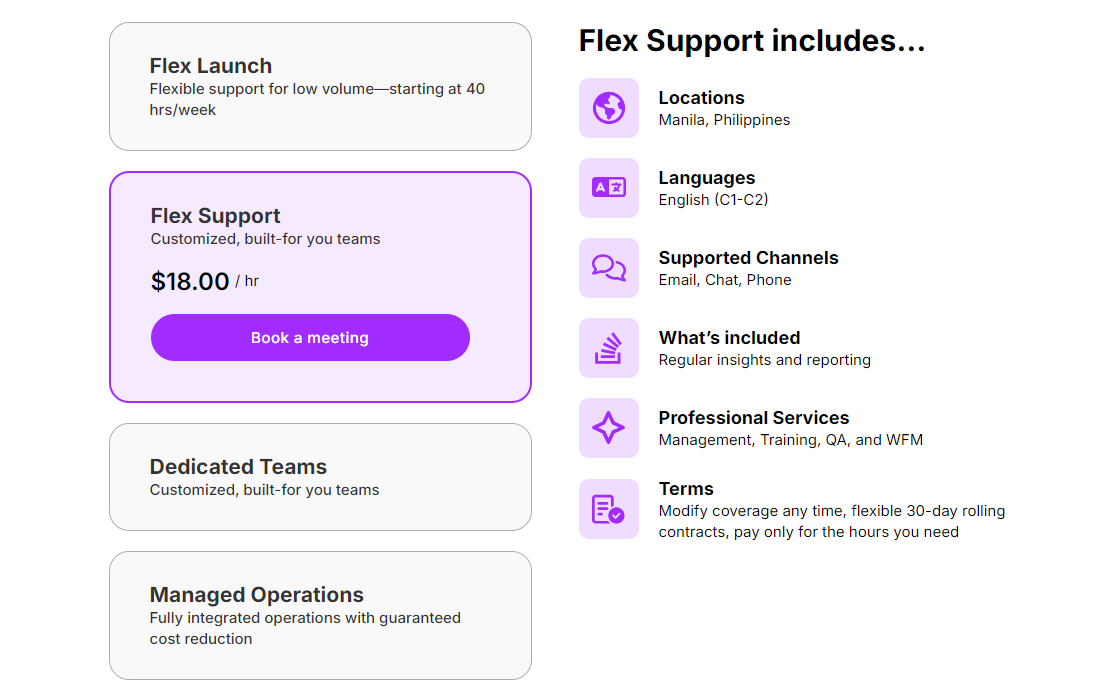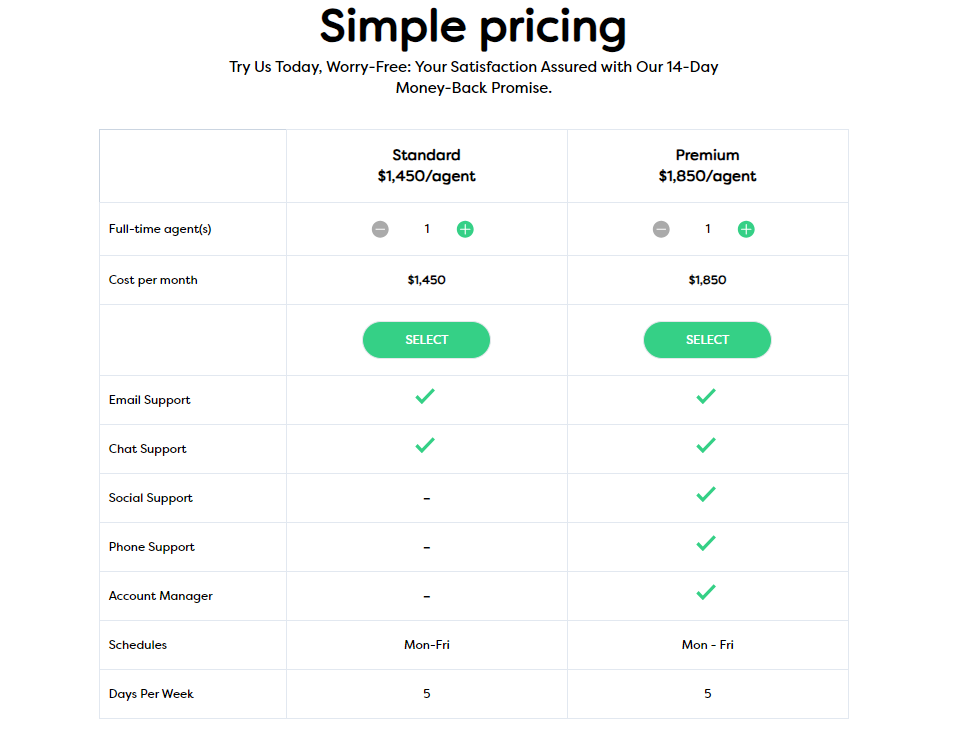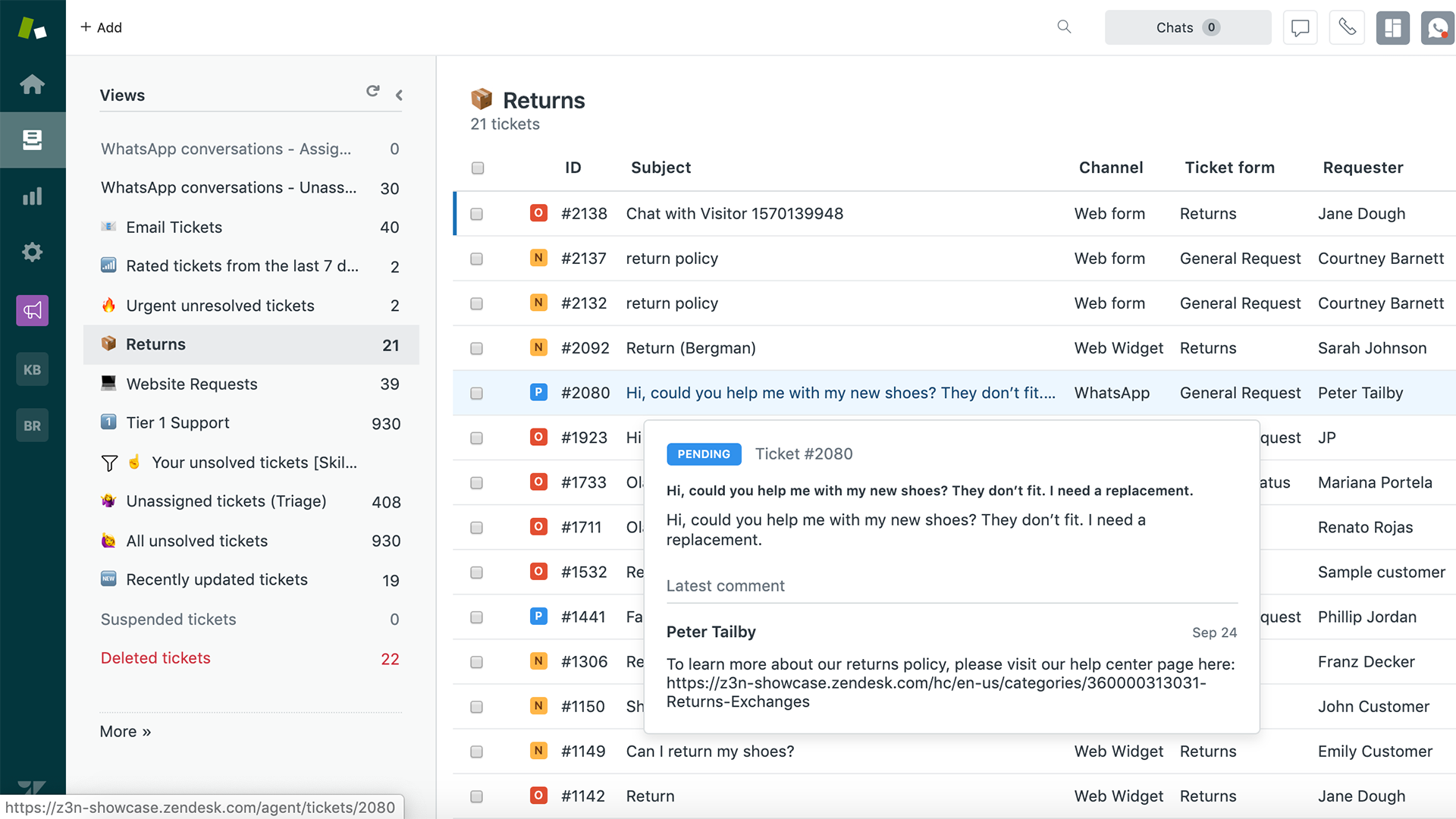In today’s environment of the global economy, companies are constantly seeking ways to cut costs while boosting efficiency. One widely adopted strategy is outsourcing customer service to a vendor or a call center (Here is the list of some customer service outsourcing companies). However, many business owners are left wondering, “How Much Does Outsourcing Customer Service Cost?”, “What Is The Cost Breakdown of Outsourced Customer Service?”, and “Is outsourcing customer service expensive?” This article will provide a detailed breakdown of the expenses involved and offer insights on how businesses can maximize the benefits of this service.
1. What are the actual costs of outsourcing customer service? Understanding the cost breakdown
Understanding the cost structure of outsourcing customer service is crucial for businesses looking to make informed decisions. By breaking down the typical pricing models used in the industry, companies can better assess the financial implications and potential benefits of outsourcing.
For instance, Leap Steam provides a practical example of how these cost structures are implemented, offering insights into the various components that influence pricing. These elements can include the type of support offered (such as phone, email, or chat), the complexity of the services required, and the number of agents of the outsourced team.
Outsourcing customer service often results in significant cost savings, primarily by reducing operational expenses related to labor, infrastructure, and technology. For many businesses, these savings are a key driver behind the decision to outsource, allowing them to allocate resources more efficiently and focus on their core activities.
1.1 Per-Hour Pricing Structure
In this most straightforward pricing model, clients are charged based on the number of hours that customer service agents spend working on their behalf. This approach is particularly well-suited for companies with predictable service demands, where the volume of customer interactions remains relatively stable over time.
The cost per hour can vary significantly depending on several factors, including the number of agents of the outsourced team, the languages required for communication, and the level of expertise needed for the job. Below is a breakdown of typical pricing within this model:
- Customer Support: For businesses that require basic customer service, such as handling general inquiries, processing simple transactions, or managing routine issues, the hourly rate usually starts at around $4.5 – $6.5 per hour. This rate is competitive and provides companies with access to consistent support without breaking the bank. This kind of support is ideal for businesses that need reliable but straightforward customer service, ensuring that their customers’ basic needs are met efficiently.

Outsourcing customer service cost /our-pricing/ (hourly rate)
- Technical Support: For more complex tasks that require specialized knowledge, such as technical support, troubleshooting, or managing industry-specific queries, the hourly rate can be higher, often starting at around $6.5 – $9.5 per hour. This rate reflects the additional skills and expertise required to handle more complicated customer interactions. Businesses that invest in specialized technical support can expect higher quality service, with agents who are well-versed in the specific technical aspects or niche areas relevant to the business

The hourly pricing model of Outsourcing customer service at PartnerHero https://www.partnerhero.com/pricing
1.2 Per-Volume Pricing Structure
The per-interaction pricing model is a flexible and cost-effective option for companies that experience fluctuating levels of customer engagement. This model is especially beneficial for businesses that want to keep a close eye on their customer service costs, ensuring they align with actual usage. Below, we explore the different types of support offered under this model and their associated costs.
- Email Support: This is a popular customer service channel, especially for businesses that handle inquiries, complaints, or requests that don’t require immediate responses. In the per-interaction model, clients are typically charged a set fee for each email processed by the support team. Pricing for email support generally starts at around $0.50 – $1.00 per email.
- Live chat: It has become an increasingly popular method for customers to interact with businesses in real-time. It offers the immediacy of a phone call but with the convenience and accessibility of text communication. In the per-interaction pricing model, clients are charged for each chat session handled by their customer service team. The cost for chat support typically starts at around $1.00 – $2.00 per chat session.
- Call Support: Phone support remains a cornerstone of customer service for many businesses, particularly those that deal with complex inquiries or high-stakes issues that require direct communication. Under the per-interaction pricing model, companies are billed for each customer call handled by their support agents. Call interactions are typically billed at around $2.00-$6.00 per call.
The per-interaction pricing model is a flexible and efficient way for businesses to manage their customer service costs. By charging based on the number of customer interactions, this model allows companies to align their expenses with actual usage, making it an ideal choice for those with fluctuating service demands.
1.3 Per-Month Pricing Structure
Monthly pricing structure plans are designed to offer businesses a tailored approach to customer service management, with different tiers available based on the scale and specific needs of the business. These options typically provide a fixed set of BPO (Business Process Outsourcing) services, ensuring that clients receive consistent support while managing costs efficiently.
- Small BPOs: For a small BPO like Leap Steam, subscription plans can start at around $800 – $1,100 per month. This is ideal for clients with a cost-effective customer service need, offering a cost-effective solution that covers essential services like handling customer inquiries, managing support requests, and providing technical assistance in English, Chinese, Japanese, Korean, and other languages. This Outsourcing Customer Service Cost Model allows small businesses to maintain a professional level of customer service without the burden of high, unpredictable costs.

Outsourcing customer service pricing offered by Manilapros
(A small BPO based in the Philippines)
- Medium BPOs: Medium-sized BPOs, which often have more locations and agents in customer service requirements, can opt for plans starting at approximately $1,200 – $ 1,600 per month. The medium BPO option is perfect for companies that require a more robust customer service infrastructure in different countries and languages, but still seek to maintain predictable monthly costs.
- Large BPOs: For large BPOs with extensive customer service operations, the price can go up to $2,500 per month or more. This option provides a high level of Nearshore/Offshore support, ensuring that large businesses can maintain their reputation for excellent customer service without the risk of unexpected expenses. These BPOs can be located in various high-cost countries such as the USA, UK, and EU.
2. How to Optimize The Cost Of Outsourcing Customer Service
Outsourcing customer service can be a cost-effective strategy, but it’s important to approach it with careful planning to ensure you maximize the value of your investment. By following these detailed tips, businesses can effectively manage their outsourcing expenses while maintaining high-quality customer support.
2.1 Identify Your Needs
It’s essential to thoroughly define your customer service needs. A clear understanding of your requirements will help you choose the right partner and ensure that you only pay for the services you truly need. Here’s how to get started:
- Types of Support Needed: Identify the specific types of customer service support your business requires. This could range from technical support and order processing to handling general inquiries. Knowing exactly what you need will help you find a provider that specializes in those areas.
- Expected Volume of Email/Chat/Calls: Estimate the volume of customer interactions you expect to handle on a daily, weekly, and monthly basis. Understanding this will help you choose the most cost-effective pricing model, whether it’s per hour, per interaction, or a fixed monthly fee.
- Working Hours: Determine the hours during which you require customer service support. Do you need coverage around the clock, or are regular business hours sufficient? Clarifying this will help you avoid paying for unnecessary services.
Clearly defining your needs will guide you in selecting the most suitable pricing model and service provider, ensuring you don’t overspend on services you don’t require. The right customer service provider will play a critical role in delivering a consistent and high-quality experience to your customers, offering multichannel support and adhering to your guidelines.
2.2 Leverage Technology for Cost Efficiency
Integrating technology into your customer service operations can significantly enhance efficiency and reduce costs. Here are a few ways to leverage technology to your advantage:
- Customer Service Software: Implementing customer service software can streamline your operations by automating various tasks. Features like ticketing systems, CRM integration, and analytics tools help manage inquiries more efficiently and provide valuable insights into your customer service performance.

- Automation Tools: Automation tools, such as chatbots and automated email responses, can handle routine inquiries, freeing up human agents to focus on more complex issues. For instance, chatbots can instantly respond to common questions, while automated emails can acknowledge receipt of inquiries and provide initial information.
- Self-Service Options: Providing self-service options, such as a comprehensive FAQ section or knowledge base on your website, can significantly reduce the volume of customer inquiries. This allows customers to find answers to their questions independently, reducing the demand on your customer service team.
By incorporating these technologies, you can enhance the efficiency of your customer service operations while keeping costs under control.
2.3. Monitor Performance of Each Customer Support Agent
Regular monitoring and evaluation can always help your company meet your quality standards. Here are some key metrics to track
- Response Time: Measure how quickly your customer service team responds to inquiries. Fast response times can improve customer satisfaction. The average response time = the Total amount of time to respond to tickets divided by the total number of tickets.
- Resolution Rate: We can apply this formula to calculate the Resolution Rate: Solved Tickets / Received Tickets x 100 = Resolution Rate. Track the percentage of inquiries resolved on the first contact. A high first-contact resolution rate indicates efficient and effective service.
- Customer Satisfaction: Collect customer feedback to gauge their satisfaction with the service they receive. Use surveys or follow-up emails to gather this information. To calculate customer satisfaction percentage, add the number of “very satisfied” and “satisfied” responses, divide by the total number of responses, and multiply by 100.
By regularly reviewing these metrics, you can identify areas to improve on and brainstorm with your outsourcing partner to address any issues. Additionally, consider the financial implications of using hourly pricing for a customer service representative and the overall cost-benefit analysis of various staffing models.
2.4 Choose the right outsourcing customer service company that fits your budget.
A well-chosen customer service outsourcing partner can help you deliver exceptional customer experiences while optimizing costs. Here are some important factors to consider when choosing an outsourcing provider:
- Tracked Record
One of the most important factors to consider is the reputation and track record of the outsourcing company. You want to partner with a provider that has a proven history of delivering high-quality service. Here’s how to evaluate their credibility:
Client Testimonials and Reviews: Look for reviews and testimonials from other clients to get a sense of their satisfaction with the provider’s services. Positive feedback is a strong indicator of the company’s ability to meet client expectations.
Case Studies: Many reputable outsourcing companies provide case studies that showcase their success in handling customer service operations for other businesses. These case studies offer valuable insights into the provider’s approach, expertise, and results.
Industry Experience: Consider whether the provider has experience in your specific industry. A company with relevant industry experience is more likely to understand your unique challenges and requirements, leading to better service delivery.
- Flexibility
Customization and flexibility are key attributes of a good outsourcing partner. Every business has unique needs, and a one-size-fits-all approach may not be effective. When evaluating potential providers, consider the following:
Tailored Solutions: Ensure the outsourcing company can customize their services to align with your specific needs. For example, Leap Steam is known for offering tailored solutions that are designed to meet the unique requirements of each client. This level of customization ensures that you receive the services that are most relevant to your business.
Transparent Pricing: Look for a provider that offers transparent pricing structures. This allows you to understand exactly what you’re paying for and ensures there are no hidden costs. Transparent pricing helps you make informed decisions and ensures that you get the best value for your investment.
Scalability: Your business needs may change over time, so it’s important to choose a provider that can scale their services up or down as required. A flexible partner can adapt to your evolving needs, whether that means increasing support during peak seasons or reducing it during slower periods.

- Cultural Fit
A strong cultural fit between your company and the outsourcing provider is essential for a successful partnership. When your company’s values and work culture align with those of the provider, it leads to better communication, collaboration, and overall performance. Here’s how to assess cultural fit:
Communication Style: Consider whether the provider’s communication style matches your company’s preferences. Effective communication is key to a successful outsourcing relationship, so it’s important that both parties are on the same page.
Company Values: Evaluate whether the outsourcing company shares similar values to your own. A shared commitment to customer service excellence, for example, can enhance the quality of service and ensure that the provider represents your brand well.
Team Compatibility: If possible, meet with the team that will be handling your account to assess their compatibility with your own team. A good rapport between teams can lead to more effective collaboration and better outcomes.
3. Outsourcing Customer Service Cost and Pricing
Outsourcing customer service is a strategic move that can significantly reduce expenses for businesses aiming to enhance their customer support capabilities. The process of maintaining an internal customer service team comes with substantial outsourcing customer service costs related to training, staffing, and management. These responsibilities can be both financially and operationally demanding.
By outsourcing customer service, businesses can alleviate these responsibilities. Dedicated agents from customer support outsourcing partners take on the tasks of training and managing customer interactions, allowing companies to focus on their core operations. This not only saves costs but also ensures that customer service is handled by professionals who specialize in this area. The answer to “How Much Does Outsourcing Customer Service Cost?” varies depending on several factors, including the complexity of the services required, the volume of customer interactions, and the geographical location of the outsourcing partner. However, with careful planning and selecting the right partner, outsourcing can be a cost-effective solution that enhances business growth and improves customer satisfaction.
Contact us to learn more about our services and receive a customized quote. Transform your customer service experience with Leap Steam and see the difference it can make for your business.
Leap Steam
⭐ Beware the Hidden Costs of Outsourcing Customer Service:
Trustworthy outsourcing providers like Leap Steam can ensure clear and transparent pricing.
However, some outsourcing customer service companies can come with hidden fees. Here are some common ones to watch out for:
- Transition Costs: These include expenses related to integrating the outsourcing partner, training their staff, and migrating data.
- Service Fees: While the primary service fees are usually clear, there can be additional charges for extra services or exceeding agreed-upon limits.
- Communication Costs: Maintaining effective communication with your outsourcing partner can incur costs, such as travel expenses or technology for communication tools.
- Currency Fluctuations: If you’re outsourcing to a provider in a different country, currency exchange rates can fluctuate, leading to unpredictable costs.
- Quality Control: Ensuring the quality of service might require additional oversight and management, which can add to the overall cost.
- Dependency Risks: Over-reliance on an outsourcing partner can lead to increased costs if you need to switch providers or bring services back in-house.
How much does it cost to outsource customer service?
Costs vary widely, typically ranging from $4.5 to $10 per hour, depending on service complexity, interaction volume, and provider location.
Are there hidden fees in outsourcing customer service pricing?
Yes, potential hidden fees include transition costs, extra service fees, communication expenses, currency fluctuations, and quality control costs. A detailed contract can help avoid surprises.
What factors influence the outsourcing customer service cost?
Key factors include the provider’s location, service complexity, interaction volume, and the number of support channels used.









Thank you. Very helpful
Great Insights!!!!!! This analysis of outsourcing customer service costs provides valuable insights into pricing structures and factors influencing expenses, helping businesses make informed decisions for efficient service management.